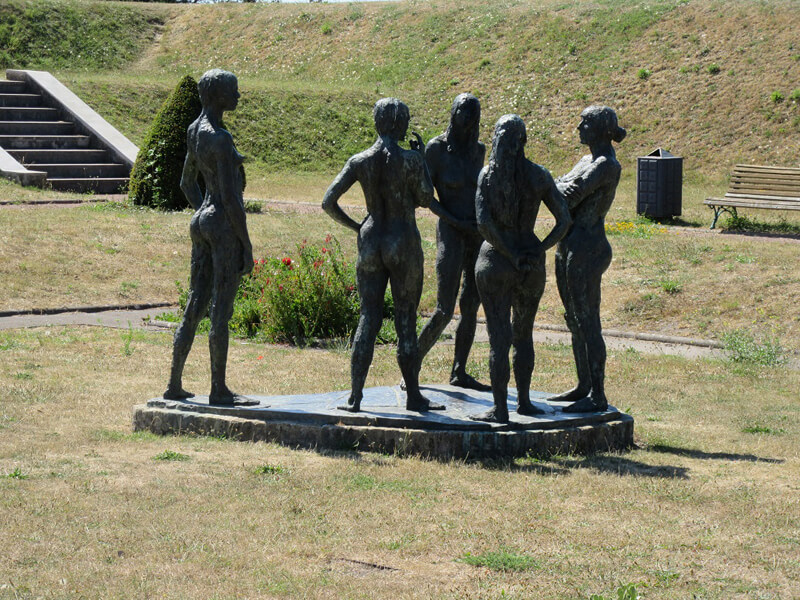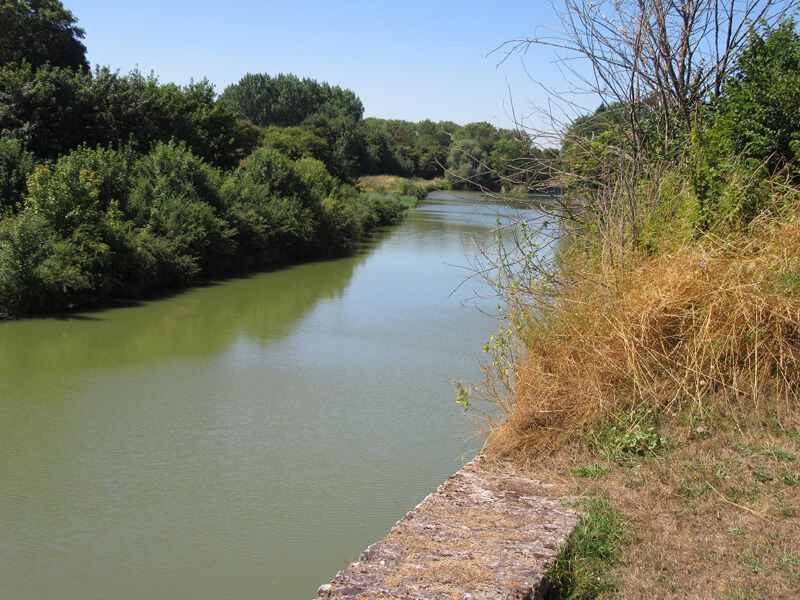Take a visit to Gravelines if you can. It is an attractive town right on the northern French coast between the working ports of Calais and Dunkirk. This bright and slumbering little town stands as an aesthetic oasis resting between the wild commercial debris of these two great harbours that provide entry into the country.
 Gravelines used to be an important entry port to France in its own right. Its origins go back to pre- medieval times. It was the primary commercial entrance point for the City of Saint Omer that lies some distance nowadays to the south. The land surrounding the river Aa gradually silted up and the coastline advanced markedly to the north. As a result, St. Omer gradually declined in influence as it was shifted further from its trading contacts.
Gravelines used to be an important entry port to France in its own right. Its origins go back to pre- medieval times. It was the primary commercial entrance point for the City of Saint Omer that lies some distance nowadays to the south. The land surrounding the river Aa gradually silted up and the coastline advanced markedly to the north. As a result, St. Omer gradually declined in influence as it was shifted further from its trading contacts.
In its heyday, Gravelines, as a commercial centre, was fought over on many occasions by the Spanish, Dutch, English and even the Austrian armies. The architectural influence of all of these nations, especially the Dutch, can be observed around the town even today.
Gravelines finally, has reverted to being a sort of stop off point for tourists and families. Its present prestige is beautifully attractive and quite sophisticated. It is a town of ‘Two Cities’. The coastal beach area is separate from the heavily ramparted main commercial centre.
The fortifications that surround the main centre are so typical of many other towns all over France. They were built to protect the inhabitants and commercial activity from the barrage of different invading forces during its history. They have been extensively restored in recent times and nowadays support the route of a splendid country walk for everyone. This generally follows the line of the surrounding waterway that blends so perfectly with the umbrella of great plants and trees towering above. The public path is wide open and peaceful. Cycle parking facilities, jumping points for children and shaded picnic spots litter this bit of landscape. On a bright sunny, summer day, the walking adventure is sublime.
The public path is wide open and peaceful. Cycle parking facilities, jumping points for children and shaded picnic spots litter this bit of landscape. On a bright sunny, summer day, the walking adventure is sublime.
Self-driving motor or paddle boats can be hired by visitors to navigate the ‘moat’ that supports the ramparted area around its entire circumference. The ‘sailors’ can look up and embrace the view of the mighty walls and tree coverings as they go about their gentle route.
Within the surrounds of the ramparts lies a busy and energetic town centre. The principal hallmark is a tall and bullet straight belfry that chimes the times of day. It stands right up against its associated hotel that is named after it. I am sure that sound insulation is provided to protect the night time slumber of the guests. The township supports many interesting dining places, watering holes and shops. There is also an imposing flagged war memorial presenting the historical background from the conflict and cultural background of the area.
 The town square in Gravelines is called the Place Charles Valentin. Free car parking is available here for the convenience of all. At the edge of this central area there is the entrance to a splendid art gallery that frequently updates its exhibits. They have all been crafted by modern day artists and portray French architectural and cultural associations in sharp style and relief. Many will hold the attention of interested visitors for concentrated observation.
The town square in Gravelines is called the Place Charles Valentin. Free car parking is available here for the convenience of all. At the edge of this central area there is the entrance to a splendid art gallery that frequently updates its exhibits. They have all been crafted by modern day artists and portray French architectural and cultural associations in sharp style and relief. Many will hold the attention of interested visitors for concentrated observation.
Leave the gallery and go outside via the rampart tunnel. Take an elevated stroll around the finely prepared gardens and admire views of the countryside and coastline from a lofty perch. The gardens support exhibits of large and finely presented bronze statues. These generally feature groups of people standing in isolation in such a finely crafted yet contemporary form. They are all powerfully imposing yet blend so well with the surrounding greenery at appropriate sites.
Gravelines is justifiably very proud of its artistic culture. It guards it all so carefully and exhibits everything professionally to visitors. The rampart walk, country park experience and art presentation live so perfectly together to create a very fine experience.
 During the 19th century period of impressionist art, Gravelines was a chosen scenery point for many of the great French artists of the day. They were attracted by the combination of the sea, the chalk hills and the wide stretching beach lines blending with the bracing wind and crashing wave effects. Some of their work can be visited within the town. Gravelines inspired impressionist art can be found in many other national galleries across the broader Europe.
During the 19th century period of impressionist art, Gravelines was a chosen scenery point for many of the great French artists of the day. They were attracted by the combination of the sea, the chalk hills and the wide stretching beach lines blending with the bracing wind and crashing wave effects. Some of their work can be visited within the town. Gravelines inspired impressionist art can be found in many other national galleries across the broader Europe.
Towards the coast, beyond the fortified area, find the more conventional Gravelines beach area. It supports the standard issue stuff for families and children. Crashing seas, ice cream, sandy beaches, kite flying and land yachting. All are there to be enjoyed as you stare out across the sea of the Channel. Perfect for children of all ages!
Gravelines is good to visit. It is safe and supports great restaurants and hotels. Visitors can take themselves easily by car or bicycle from the ports of Calais and Dunkirk. The landscape is low lying and level and is served by many rural roads away from the main routes. Gravelines is splendid to simply enjoy. It has so much for families to see and appreciate.











